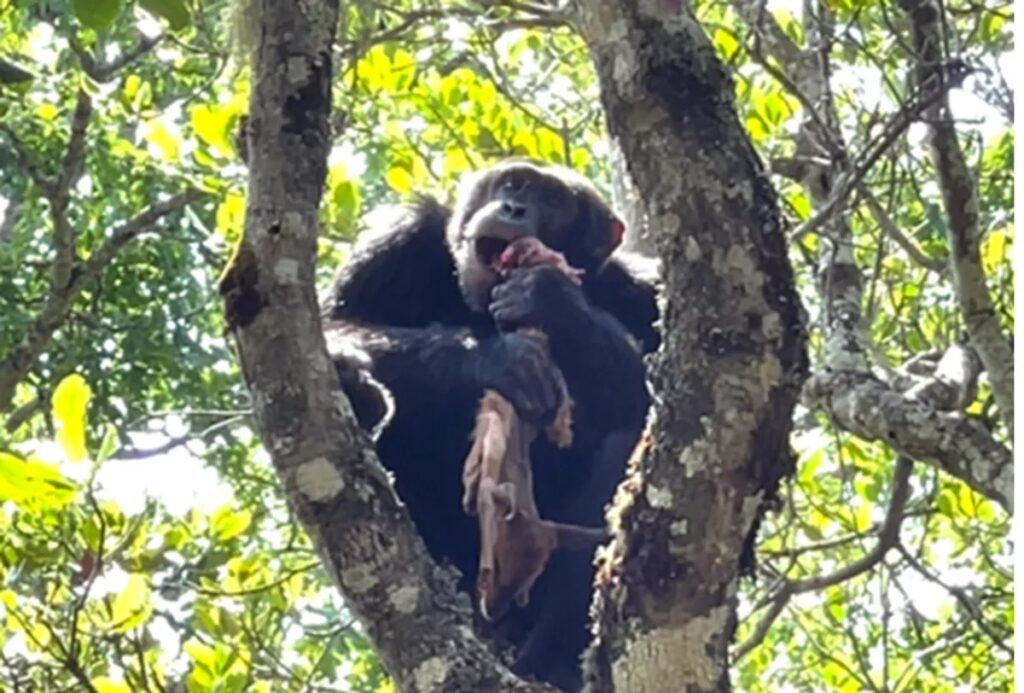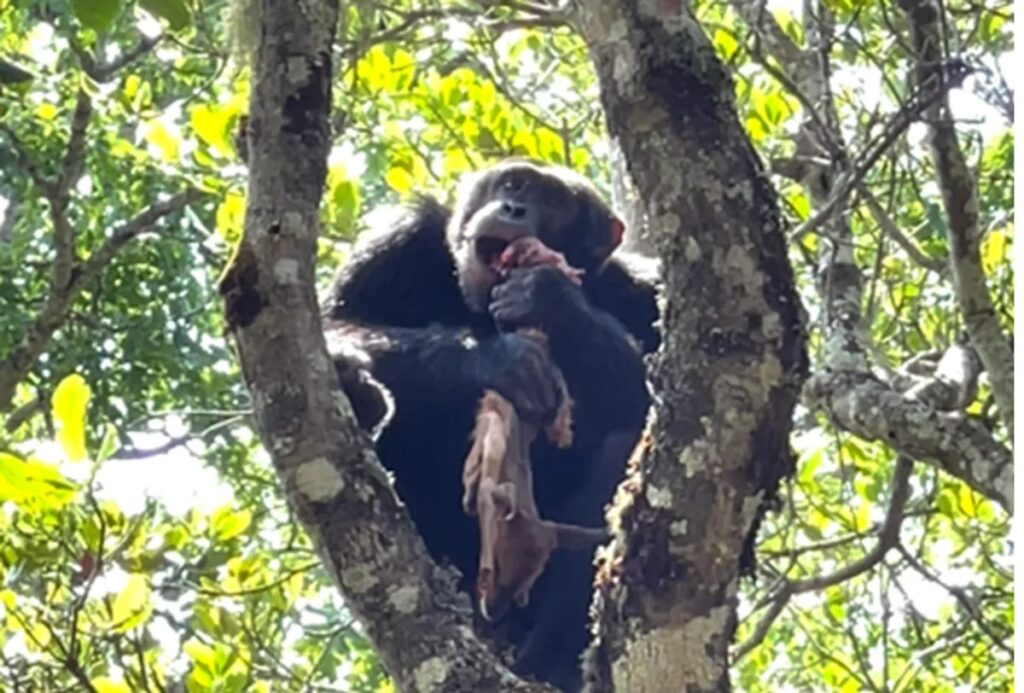
In a rare and captivating spectacle, chimpanzees in Tanzania’s Issa Valley have been witnessed engaging in confrontational scavenging behavior, shedding light on the complex evolutionary journey of these fascinating primates. The incident, which unfolded on October 24, 2021, involved an alpha chimp named Imba, who managed to snatch the carcass of a juvenile bushbuck from a crowned eagle.
Chimpanzees, typically recognized as herbivores, occasionally exhibit carnivorous tendencies by consuming meat from animals they’ve hunted. However, confrontational scavenging, where chimps actively compete for and claim a prey item, is an exceptionally uncommon behavior, especially among the endangered East African chimpanzee population.
The researchers, led by Sam Baker, a bioanthropologist from University College London, observed the event while tracking a group of nine chimpanzees. Imba, the alpha chimp, emerged from the dense forest into an open grassy area, where a crowned eagle was seen hastily retreating. Imba carried the carcass of the bushbuck, suggesting a potential altercation between the chimp and the eagle, leading to the bird abandoning its prey.

Imba’s acquisition of the bushbuck triggered a series of events within the chimpanzee group. The rest of the chimps, alerted by the commotion, followed Imba up a tree. Tussles ensued as some males competed for the meat, while others resorted to begging. Ultimately, at least four individuals participated in consuming the bushbuck, reducing it to a mere skull.
This rare observation challenges previous notions about chimpanzee behavior and introduces the possibility of confrontational scavenging being more prevalent than previously recognized. The researchers argue that such behavior might have been overlooked in the past, with confrontational scavenging potentially serving as a crucial stepping-stone in the evolutionary transition of early humans.

The authors of the study suggest that confrontational scavenging could have played a pivotal role in the evolution of hominins, providing a bridge between being “marginal scavengers” reliant on carnivore leftovers to becoming successful hunter-scavengers capable of securing fleshed carcasses from large predators. This revelation prompts contemplation on the parallels between chimpanzee behavior and the evolutionary milestones that shaped early human dietary habits.
Whether this event was an opportunistic occurrence or part of a unique cultural trait among the Issa chimpanzees remains uncertain. Nonetheless, this rare glimpse into confrontational scavenging provides a valuable opportunity to reassess our understanding of chimpanzee behavior and its potential implications for our own evolutionary history.

Leave a Reply